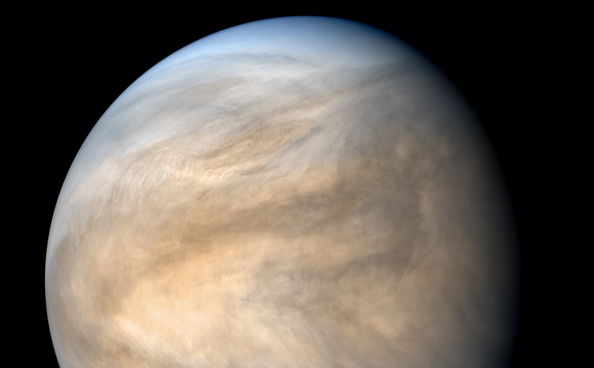Physical Address
304 North Cardinal St.
Dorchester Center, MA 02124
Physical Address
304 North Cardinal St.
Dorchester Center, MA 02124
Being human in this 'brave new world'
Being human in this 'brave new world'

Could living organisms be “swimming” through the thick atmosphere of Venus? This extraordinary possibility is enhanced by recent findings. The discovery of phosphine gas has rekindled the concept of humanity building “cloud-cities” high above the planet’s hell-like surface.
In September 2020 an international team of astronomers announced the discovery of a chemical marker of life in the atmosphere of Venus.
A scientific paper published on September 14 entitled “Phosphine on Venus Cannot be Explained by Conventional Processes” described the discovery of a chemical marker of life in the atmosphere of Venus.
The opening lines of the paper stated: “The recent candidate detection of 20 ppb of phosphine in the middle atmosphere of Venus is so unexpected that it requires an exhaustive search for explanations of its origin.”
The paper seductively added that no ordinary “phosphine production pathways are sufficient to explain the presence of ppb phosphine levels on Venus”.
A team of scientists used data from ALMA and the James Clerk Maxwell Telescope (JCMT) in Hawaii to make its discovery of phosphine gas in the atmosphere of Venus.
September’s results showed a spectral signature of phosphine in the planet’s clouds, and tantalisingly phosphine is produced on Earth by microbes living in the guts of animals like penguins, or in oxygen-poor environments such as swamps.
One of the scientists involved, MIT’s Dr Clara Sousa-Silva, said the finding was one reason to fund more research into the planet’s complexities.
MIT’s Dr Clara Sousa-Silva said: “Venus has been woefully overlooked in the past decades”.
She added: “The planet’s clouds could be are a more interesting target for habitability than Mars”.
The closest physical, rather than biological, explanation for the presence of phosphine in the Venusian atmosphere is extreme Vulcanism coming from the planet’s surface.
However, Dr Sousa-Silva said the amount of the gas produced from volcanos would still be too weak and does not explain “the abundance of phosphine” that recent data predicts.
Researchers were left with the one uncomfortable, but tantalising, explanation for the levels of phosphine gas on the planet.
Dr Sousa-Silva explained that there is “one way that phosphine could be produced in the clouds, and that is life”.
But, predicated her statement by saying that this was an “extraordinary claim that needs extraordinary evidence”.
She then added that “until we understand Venus better, it is the only explanation left”.
It must be highlighted that the data on phosphine gas in the atmosphere on Venus from September was updated in November of 2020.
The reprocessing of the data in November found the average levels of phosphine across Venus was one-seventh of the original estimate, but the discovery is still significant and hard to explain.
The atmosphere on Venus atmosphere is so thick it could almost be considered an ocean.
The gases that blanket the planet are 90 times thicker than Earth’s.
However, there is a sweet spot within certain altitudes of Venus’ soupy atmospheric where the temperatures and pressures would be conducive to human habitation.
This has led researchers to propose a “cloud city” concept that would float 30 miles high above Venus’ baking surface and bask in a Mediterranean climate of 30 Degrees Celcius, although without the oxygen.
The clouds would also shield humans from the dangers of space-based radiation and Venus’ gravity is nearly as strong as that on Earth, meaning very little muscle and bone deterioration for colonists.
However if one were to fall from this conceptual floating cloud city, the acid rain would strip the flesh from bones before landing to a surface so hot it would melt lead.